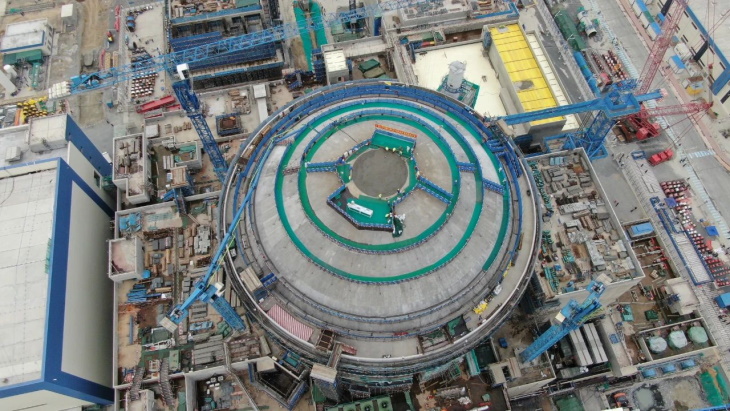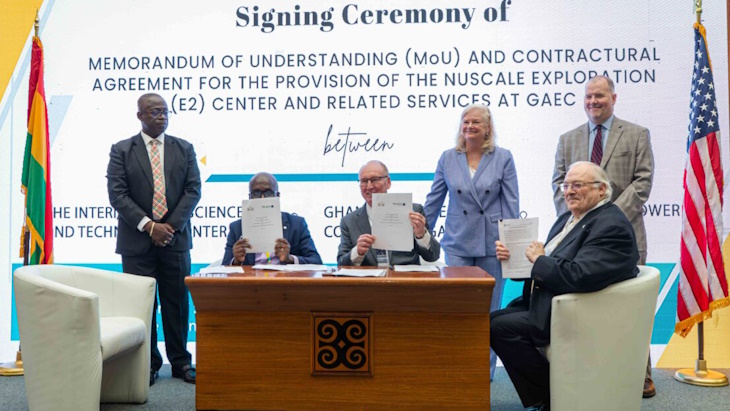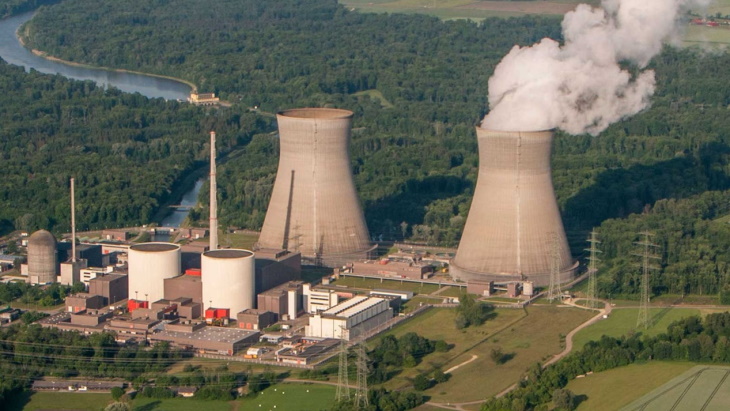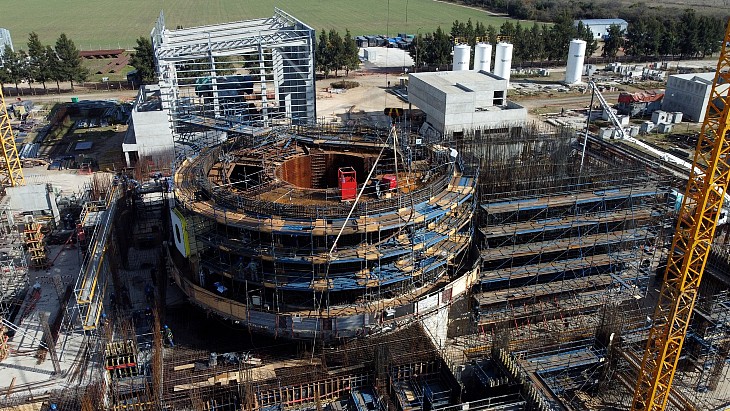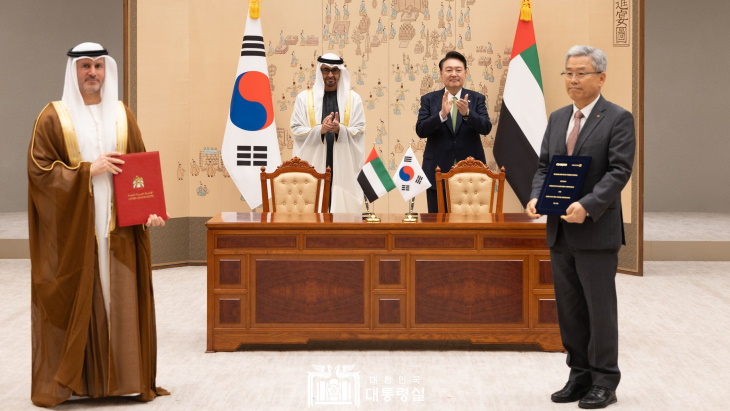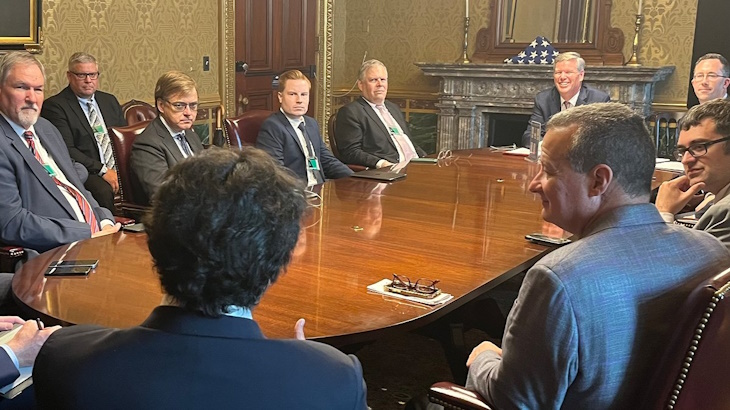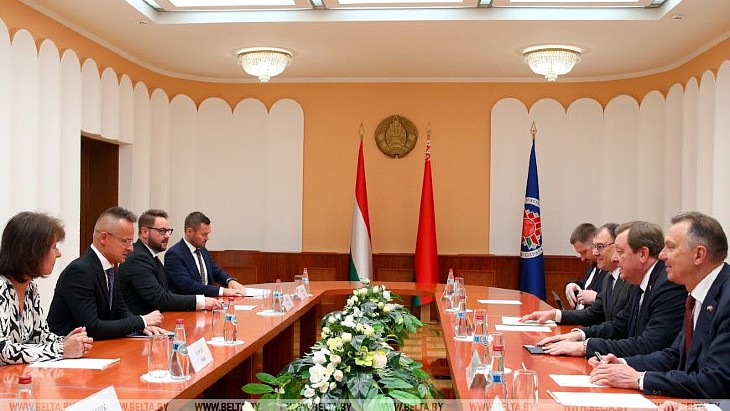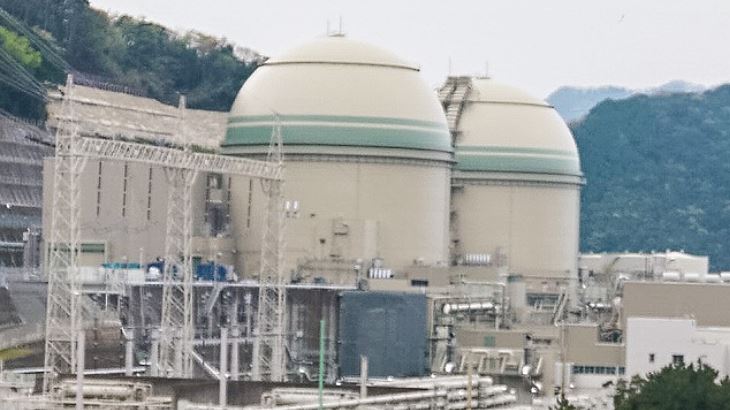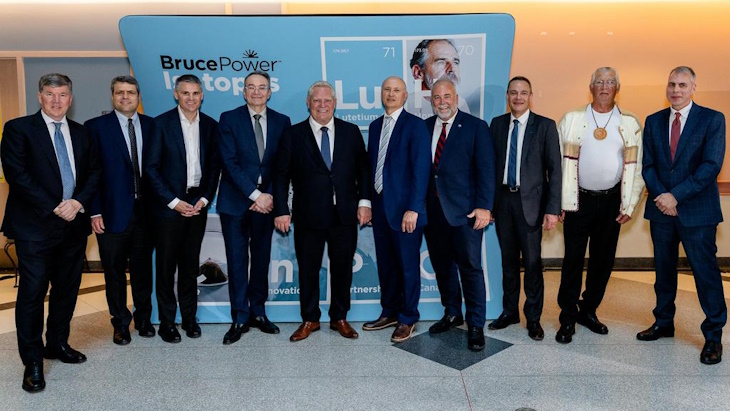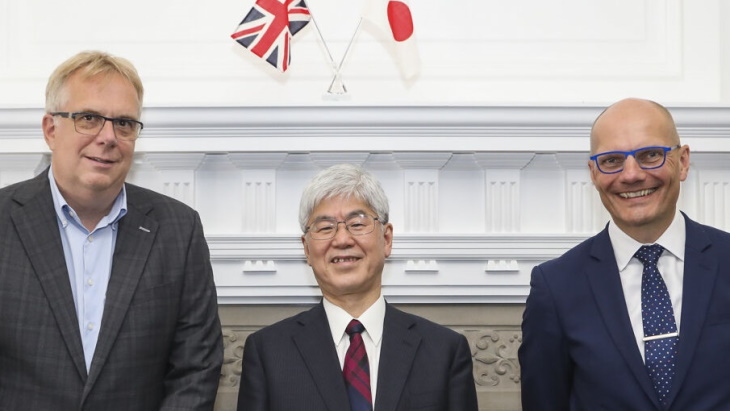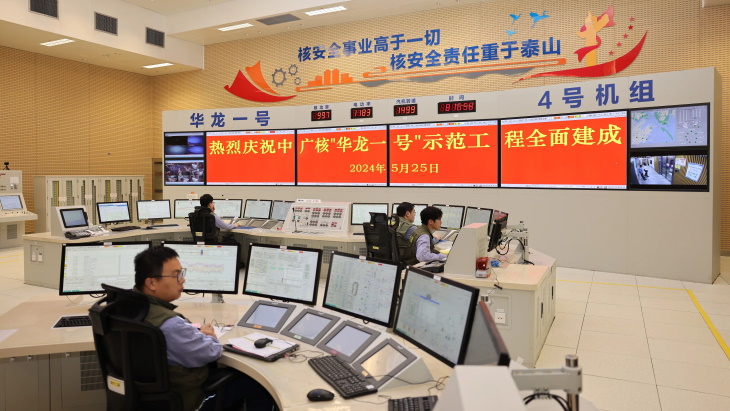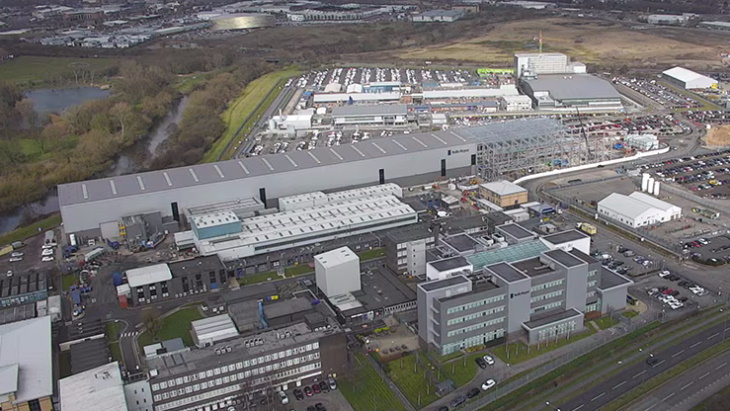Source: https://www.world-nuclear-news.org/Articles/SMR-developers-enlist-French-nuclear-expertise
Thorizon of the Netherlands has signed a cooperation agreement with France's EDF R&D to advance the Thorizon One molten salt reactor design. Meanwhile, Blue Capsule has signed a partnership agreement with the French Alternative Energies & Atomic Energy Commission, from which it was spun off, for the development of its small modular reactor.
Thorizon - a spin-off from NRG, which operates the High Flux Reactor in Petten - is developing a 250 MWt/100 MWe molten salt reactor (MSR), targeted at large industrial customers and utilities. Thorizon aims to construct a pilot reactor system before 2035.
MSRs use molten fluoride salts as primary coolant, at low pressure. They may operate with epithermal or fast neutron spectrums, and with a variety of fuels. Much of the interest today in reviving the MSR concept relates to using thorium (to breed fissile uranium-233), where an initial source of fissile material such as plutonium-239 needs to be provided. There are a number of different MSR design concepts, and a number of interesting challenges in the commercialisation of many, especially with thorium.
The molten salt fuel adopted by Thorizon uses a combination of long-lived elements from reprocessed used nuclear fuel and thorium. The reactor will be able to recycle long-lived waste from existing nuclear facilities. The Thorizon One concept is unique in that the core is composed of a set of cartridges that is replaced every five to ten years. This, the company says, overcomes two molten salt design obstacles: material corrosion and handling of used fuel volumes.
Under the new agreement, EDF R&D will review Thorizon's neutronic core calculations and conduct scenario analyses to determine how the Thorizon One could help to close the fuel cycle in the European reactor fleet.
Thorizon said it will "benefit from EDF's expertise as the French leader in electricity production, and in particular from the recognised skills of its R&D researchers".
"The R&D team covers all disciplines from neutronics and fuel to safety and construction," said Bernard Salha, EDF R&D Director and EDF Group Chief Technical Officer. "We are actively supporting several start-ups in the France 2030 programme. The cartridge-based approach of Thorizon is interesting and promising."
"It is a pleasure to work with the EDF team which has more experience in nuclear than any company across the globe," added Thorizon CEO Kiki Lauwers. "Thanks to EDF R&D, start-ups like us benefit from access to unique industry experts that can very quickly spot the strengths and areas for improvements in our design. We hope we can continue to work with the EDF R&D team on the realisation of our technology in the future. We believe all solutions are needed to empower the energy transition and the Thorizon One can be a great compliment to the existing and planned nuclear fleet."
Horizon says its ambition is to develop an MSR that "can be realised rapidly and smartly, is 'walk-away' safe, and takes a first step towards circularity by using long-lived nuclear waste as a fuel source". The company aims to build a non-nuclear molten salt demonstrator in the short-term and finalise the detailed design to start building a first-of-a-kind Thorizon One reactor by 2030.
Decarbonising industry
Blue Capsule - a spin-off from France's Alternative Energies & Atomic Energy Commission (CEA) - has announced the signing of a partnership agreement with the CEA for the development of its small modular reactor (SMR) that will supply heat and power to industry.
Aix-en-Provence-based Blue Capsule is developing a sodium-cooled, high-temperature SMR which can provide 150 MW of heat at 700°C, along with high-temperature steam and electricity. The company aims to decarbonise industrial sites used for ammonia and soda ash production, with subterranean capsules co-located onsite, close to demand.
Under the new agreement - with financial support from French public investment bank Bpifrance - CEA's support for Blue Capsule will extend to fields such as equipment and components, materials, calculation codes and TRISO-based fuel.
"France's leadership in the fields of nuclear energy and low-carbon solutions is creating big opportunities for industry right across the country," said Blue Capsule's reactor architect Domnin Erard. "And for Blue Capsule, collaboration with the French nuclear sector is front and centre of our strategy.
"This vital partnership with the CEA means that Blue Capsule benefits from world-class expertise across the board. It lays the foundations for our future industrial cooperation with the French nuclear supply chain, for manufacturing and assembling Blue Capsule units.
"It all comes down to cutting industrial CO2 emissions and of course the re-industrialisation of communities in France and beyond. For our part, we'll do everything we can to help achieve that objective."
Blue Capsule is planning to build a proof-of-concept sodium loop and a non-nuclear prototype by 2030. The company's first-of-a-kind SMR is scheduled for construction by 2035 and is set to be built in France.
